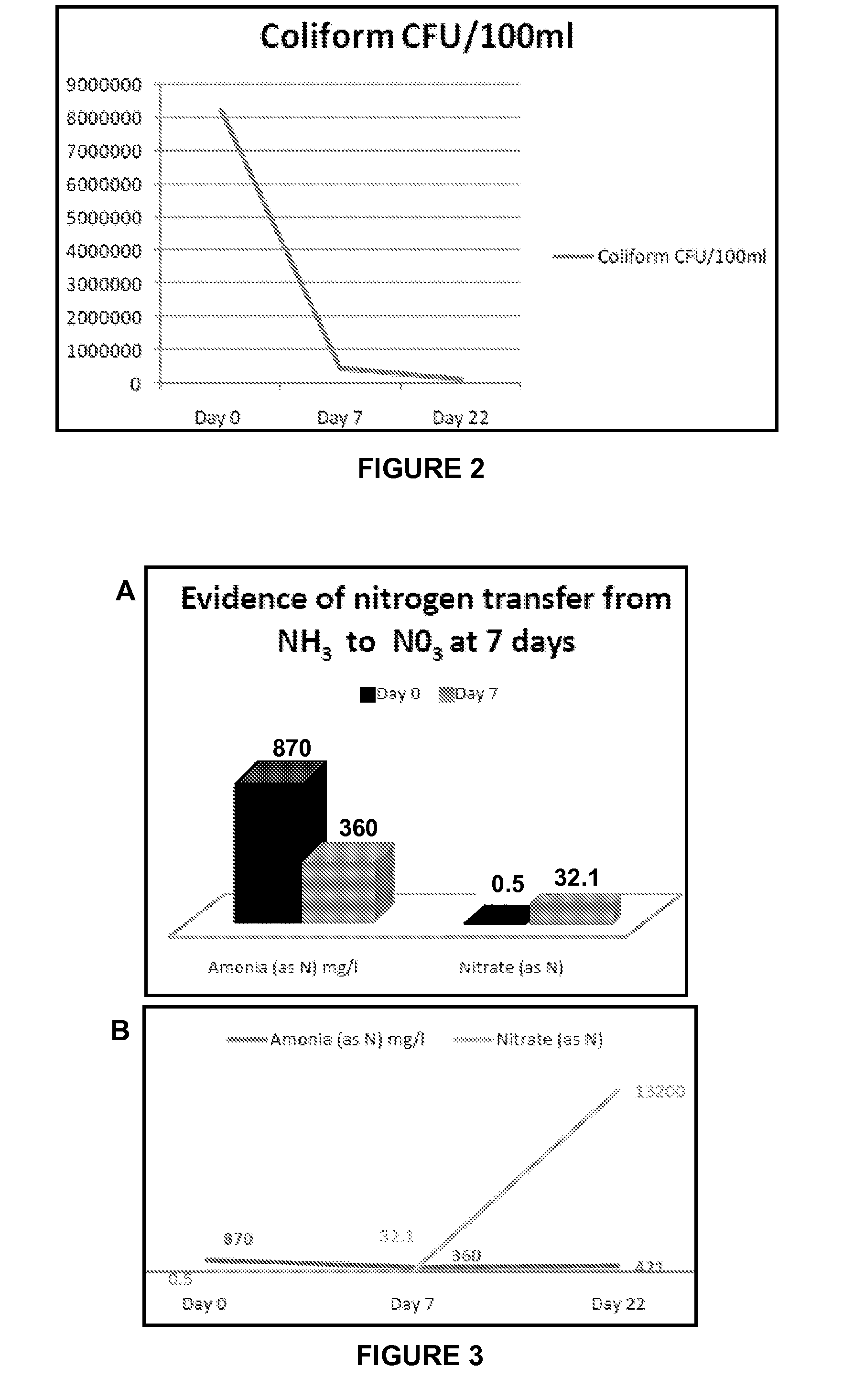Microbial compositions and methods
a technology of compositions and microorganisms, applied in the field of compositions and methods comprising microorganisms, can solve the problems of releasing or creating contaminants in the environment, affecting the quality of soil, polluting areas, etc., and achieves the effects of enhancing seed germination, root production, and increasing the yield of plants
- Summary
- Abstract
- Description
- Claims
- Application Information
AI Technical Summary
Benefits of technology
Problems solved by technology
Method used
Image
Examples
example 1
A Method for Making a Microbial Composition
[0127]A microorganism, such as a bacteria or yeast, was selected for inclusion in the composition, based on its enzyme activity profile, its ability to grow in media, its lack of spore formation, or other criteria described herein. The microorganism was grown in standard medium for that organism and when at an exponential growth phase, was aliquoted and stored. The media for growing microorganisms, such as yeasts and bacteria, are known to those skilled in the art.
[0128]For example, in making I-M Lab, an aliquot (5 mL of cells at 1×106) of each of IN-LH1, IN-BS1 and l. casei were added to a media suitable for lactobacilli and bacillus, such as Water 700 ml, Molasses 37.5 g, bentonite clay, 3.75 g, Sea salt 3.75 g, Water 720 ml. The bacteria were grown to an OD 0.752.
[0129]In making I-M PNSB, an aliquot (5 mL of cells at 1×106) of IN-RP1 was added to a media suitable for phototrophic bacteria. For example Water 134 ml, Fish emulsion 9 ml, IN...
example 2
Use of the Compositions and Methods to Control and Reduce Pond Sludge
[0138]On day 1, a 50 liter (5×106 cells per ml) a composition of the present invention, which was the result of inducing growth in a closed container of 80 Liters water plus 10 liters of molasses and an aliquot of 10 Ls of the concentrated composition of Example 1, was poured into the pond at a dilution of approximately 100:1-1:10000 and was circulated and aerated via a pump for three hours per day. On day 14, a second 50 liters of the composition above was added to the pond and the body of water was circulated and aerated as before. On day 25, the duck weed began to die off and could be removed from the surface of the pond into the gully with a hose. Odor from the sediment also disappeared. On day 30, the pond was clear of algae and duck weed. Past day 30, the remediation process continued to improve water chemistry, lowering phosphate and nitrogen levels. Furthermore, the water clarity improved, there were no odo...
example 3
Use of Microorganism-Containing Composition and Methods to Control Odor Caused by Shallow Pond Sludge
[0139]Two shallow interconnecting ponds were inoculated with the concentrated composition of Example 1. In the upper pond, concentrated secondary fermentation product was diluted 1:100 in water and 15 liters were sprayed on the surface and edges of the pond. No aeration was used. In the lower pond, 10 liters was sprayed on the pond surface and edges of the pond, and, again, no aeration was used. In the adjacent septic seepage field, 5 liters of the concentrated composition of Example 1 was sprayed on the ground and grass in and surrounding the field. Within one hour, odors subsided and continued to be controlled. Further spraying of the seepage field was done as needed, and, during the following weeks, the water in the ponds clarified.
PUM
| Property | Measurement | Unit |
|---|---|---|
| volume | aaaaa | aaaaa |
| volume | aaaaa | aaaaa |
| volume | aaaaa | aaaaa |
Abstract
Description
Claims
Application Information
 Login to View More
Login to View More - R&D
- Intellectual Property
- Life Sciences
- Materials
- Tech Scout
- Unparalleled Data Quality
- Higher Quality Content
- 60% Fewer Hallucinations
Browse by: Latest US Patents, China's latest patents, Technical Efficacy Thesaurus, Application Domain, Technology Topic, Popular Technical Reports.
© 2025 PatSnap. All rights reserved.Legal|Privacy policy|Modern Slavery Act Transparency Statement|Sitemap|About US| Contact US: help@patsnap.com



